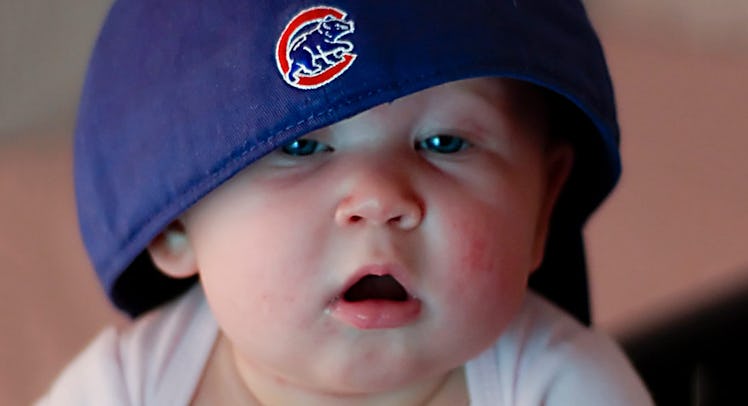Babies Can Cry With Accents, Says Science
Nuances of a mother's speech patterns could actually change how babies vocalize.

Back in 2009, Dr. Kathleen Wermke and her colleagues the Center for Prespeech Development and Developmental Disorders at the University of Wurzburg in Germany first analyzed the crying patterns of German and French newborns. Their findings, published in Current Biology, showed that French babies cry with a rising melody, while German infants’ cries falter towards a falling one. They had accents or, more to the point, “craccents.” The discovery made a few waves, but the lack of corroborating evidence made the findings easy to dismiss or ignore.
Not anymore.
“There is evidence that the primary auditory cortex has adapted to the maternal voice even before full-term maturation,” Wermke explained to Fatherly. “These precocious perceptive performances raised the question of whether the reach world of auditory experience, including native-language prosody, will leave some traces in infants’ own sound production.”
In layman’s terms, Wermke’s latest study suggests that the brain of a developing fetus adapts to the voice of its mother early on, and that the nuances of the mother’s speech patterns could actually change how babies vocalize.
Though Wermke’s original sample was limited to 60 babies total, and the research is now eight years old, she has since been able to duplicate her findings multiple times. In a June 2016 article, published in Speech, Language and Hearing, Wermke tracked the cries of another 42 babies (21 German infants and 21 Cameroon infants) during their first week of life. She observed a notable difference across all fundamental frequency variation measures.
In a more recent study in the November 2016 Journal of Voice, Wermke looked at an additional 110 newborns (55 Chinese and 55 German) and analyzed 6,480 cries. Her analysis revealed significant group differences for three fundamental frequencies with Chinese infants crying at the highest frequency, overall.
Wermke has also looked into whether the specific nuances of how parents speak that might influence craccent development. Her research has revealed that, starting around the last trimester, a fetus is already capable of recognizing the voice and melody of it’s mother via bone conduction. During this time, prenatal imprinting through learning and memorization takes place alongside the early maturation of the central and peripheral hearing system. In order for this to produce a full blown craccent, a mother’s tone and rhythm has to be highly distinct and consistent.
“Only very salient and clear acoustic features of the environment, and continued exposure to them, are suitable to elicit vocal learning in human newborns,” she says. For instance, the distinct vocal patterns of German versus French mothers would be far more likely to result in different types of cries in their children than the more subtle differences between different regional accents in the United States. Wermke has yet to study crying differences in American babies, but she suspects that they would only result in different types of cries in regions with very noticeable vocal quirks.
That means that babies in Chicago could be crying differently from babies in Boston, while it’s quite possible babies from Indianapolis sound the same as those from Los Angeles—at least up until they’re are old to bawl out their agents. “If regional accents within the U.S have those unambiguous features” we could expect to hear different crying accents in different parts of the U.S., Wermke says. “This would be a crucial prerequisite.”
This article was originally published on